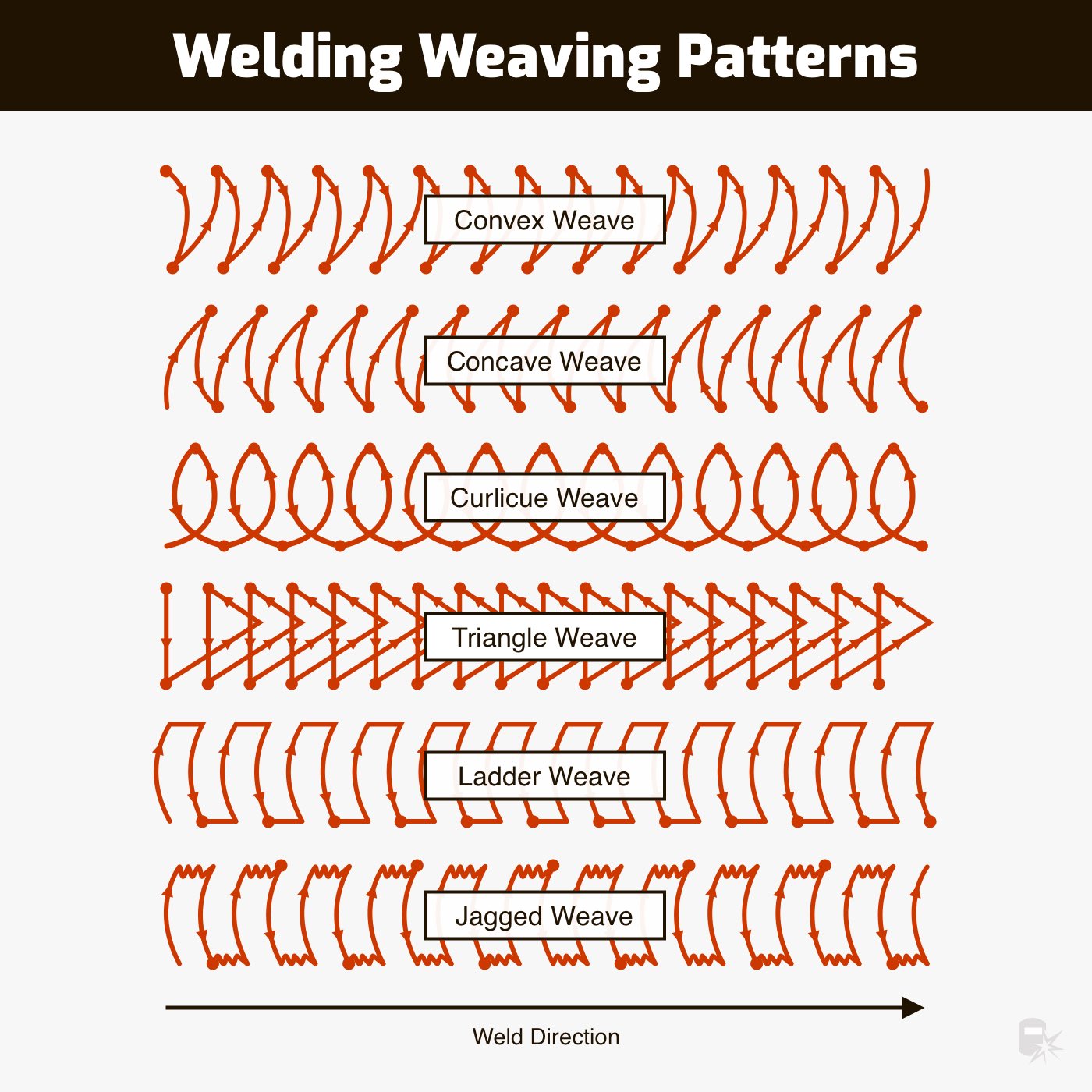Depending on the material being welded, its thickness, and. While simple, mastering the speed and movement consistency is vital for achieving a good weld. When & how to use them. Web save 8.3k views 4 years ago elite partner matti christensen has mastered the weave technique with mig welding. Weaves are used for wider welds and range from a tight side to side motion that can be a stringer bead to welds that are wide and big for a single pass.
These patterns significantly impact the final weld bead's shape, size, and penetration depth. Web generally speaking, there are two main welding bead techniques and patterns: It's used when you make two or more welds on the same seam. There are different mig welding patterns, such as the stringer bead pattern, weave pattern, and whip pattern, each serving a specific purpose and offering unique advantages. For thin materials, a narrow weave pattern is typically preferred.
There are different mig welding patterns, such as the stringer bead pattern, weave pattern, and whip pattern, each serving a specific purpose and offering unique advantages. The most common sticking welding pattern is the weave. Welding bead types tig welding beads Web save 8.3k views 4 years ago elite partner matti christensen has mastered the weave technique with mig welding. Web what are weave patterns in mig welding?
Here are the seven essential mig welding patterns that will lead you to become an experienced welder. Web save 8.3k views 4 years ago elite partner matti christensen has mastered the weave technique with mig welding. For thin materials, a narrow weave pattern is typically preferred. These patterns significantly impact the final weld bead's shape, size, and penetration depth. This technique produces a deep weld penetration and higher overall quality. It's used when you make two or more welds on the same seam. This is the most basic and straightforward pattern, involving a simple linear motion. When welding thick materials, a stringer pattern is often the best choice. This results in a broader, more substantial bead and is particularly beneficial for filling large gaps or when working with thicker materials. The circle weld pattern is a more advanced weld pattern that involves moving the welding. Just as a note in most shipyards weaving is not allowed. You will make a weaving pattern in order to cover a larger area. Web the two main types of welding bead patterns are stringers and weaves. Weaves are good for big joints that have no distortion issues. In other words you use this when you are layering welds.
Web Choosing The Right Mig Welding Pattern Welding Thin Materials:.
Just as a note in most shipyards weaving is not allowed. Web by using different weave patterns, welders can control the amount of heat and penetration, ensuring the weld is strong and secure. Web 6 common mig weld patterns: As the name implies, you set up the mig welder in the place it needs to be and then hold it steady.
While Simple, Mastering The Speed And Movement Consistency Is Vital For Achieving A Good Weld.
Web alternative patterns for mig welding holding still. In other words you use this when you are layering welds. The weaving welding technique involves making a series of overlapping circles with the electrode as you progress along the stable full arc length of the weld joint. Stringer beads weave beads however, once you decide to create weld beads, there are different variations of the weave pattern which look different and differ from the straight weld.
When & How To Use Them.
Web weave bead welding involves making a weaving pattern in order to cover a larger surface area. We like to think of using “welding patterns” to achieve different bead profiles. Weaves are good for big joints that have no distortion issues. Weave bead welding is exactly as it sounds;
You Use This Motion To Make Cover Welds Over Stringer Beads (Multipass Welding).
Web the two main types of welding bead patterns are stringers and weaves. This motion allows you to make cover welds over stringer beads, otherwise known as multipass welding. Properly executed weave patterns ensure uniform heat distribution, prevent overheating. If you want to use fillet welds or stringer beads, this technique works better than weaving.










